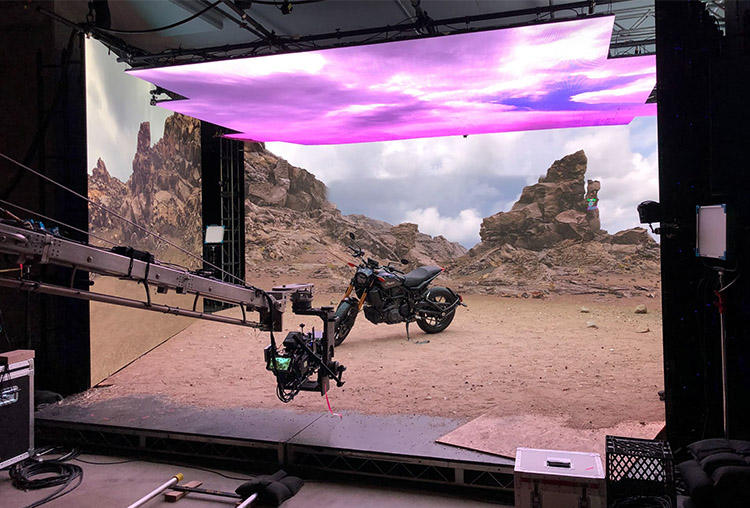LED screens are rapidly changing the way we access information and interact with our environments. They are also changing the world of filmmaking, especially virtual production studios. Let’s take a look at what these screens involve and how they are used.

What are virtual film production studios?
A virtual film production studio operates like a traditional movie studio, with one important difference: instead of relying on physical sets or fixed backdrops, the studio is surrounded by LED video walls. These screens display a digital backdrop tailored to the scene being filmed. While green screens used to be the primary tool for creating virtual environments, the film industry is increasingly shifting to virtual production as technology advances. Although green screens provide a flexible canvas for post-production work, they have limitations.
Working with green screens can be time-consuming and requires skilled post-production teams to achieve convincing visual effects. Virtual LED backgrounds, however, streamline the process by reducing the amount of post-production effort needed to integrate the background with the actors.
More immersive and engaging sets
One of the key advantages of virtual film production is that actors can perform in front of a dynamic backdrop, instead of a blank green screen. This helps them engage more fully with their scenes—emotionally, intellectually, and practically—by interacting with their environment in a more natural way. High-quality LED screens display bright, high-resolution images that move in sync with the camera, creating an immersive atmosphere that allows actors to perform more authentically.
Cost savings
While the upfront cost of installing LED video walls can be significant, these costs are often offset by the savings in post-production. Green screens require extensive time and labor to create special effects and composite scenes, while LED production methods are less intensive and continually improving. This makes virtual production a viable option for smaller-budget films to achieve higher-quality results in less time, while larger-budget productions can redirect those savings to other creative or technical aspects of filmmaking.
Moreover, the need for travel or physical set construction is drastically reduced, leading to savings in time, costs, and a more environmentally sustainable production process.
Expanding creative possibilities
Virtual film sets are opening up new creative possibilities for filmmakers and TV producers, even those working with smaller budgets. For example, a couple of decades ago, grand fantasy films like The Lord of the Rings were only achievable for the biggest Hollywood studios. Now, virtual technology allows for convincing visuals in a wide range of genres, from historical dramas to sci-fi and children’s fantasy series.
Integration with game engines
LED screens are increasingly used in video game engines due to their ability to create ultra-realistic, dynamic environments, enhancing the immersive experience for players.
Improved lighting efficiency
Lighting is one of the biggest challenges with green screens, as careful setup is needed to avoid unwanted shadows and reflections on the set and actors. Additionally, post-production work is required to add natural-looking shadows and reflections. LED screens help mitigate these challenges by providing more even and consistent lighting, reducing the need for extensive post-production adjustments.

